Pools and high availability (HA) with Citrix XenServer 6.5
- Citrix
- Citrix XenServer
- 27 October 2016 at 10:17 UTC
-

- 4/5
10. Install a virtual machine
To install a virtual machine, you will proceed as usual, except that you need to select a shared storage (NFS or preferably iSCSI) to store your virtual machine.
Indeed, the local storage of a server is not visible by other servers.
In our case, we will install Windows 7 (64-bit) in a virtual machine.
To install the OS, you can do it from any location (CD drive of the server, NFS share, ...).
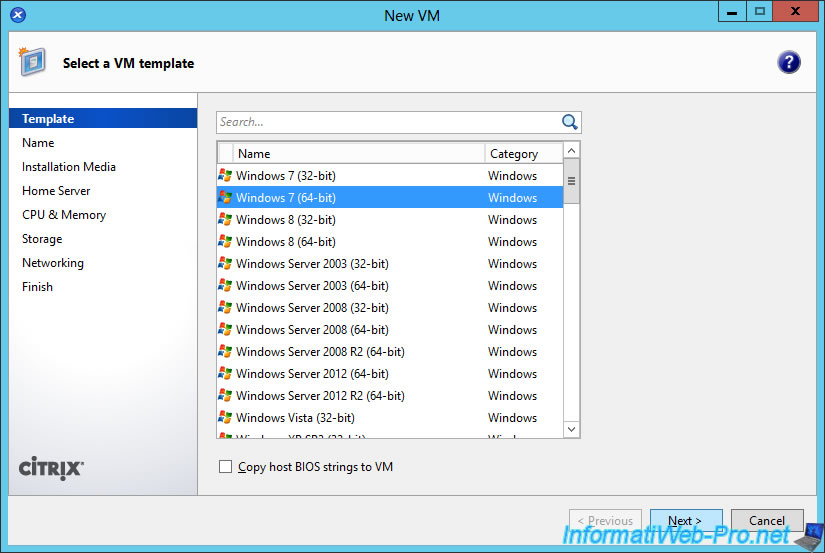
Select the default server on which you want to start the virtual machine.
Note that this choice can be modified later by going to the properties of the virtual machine.
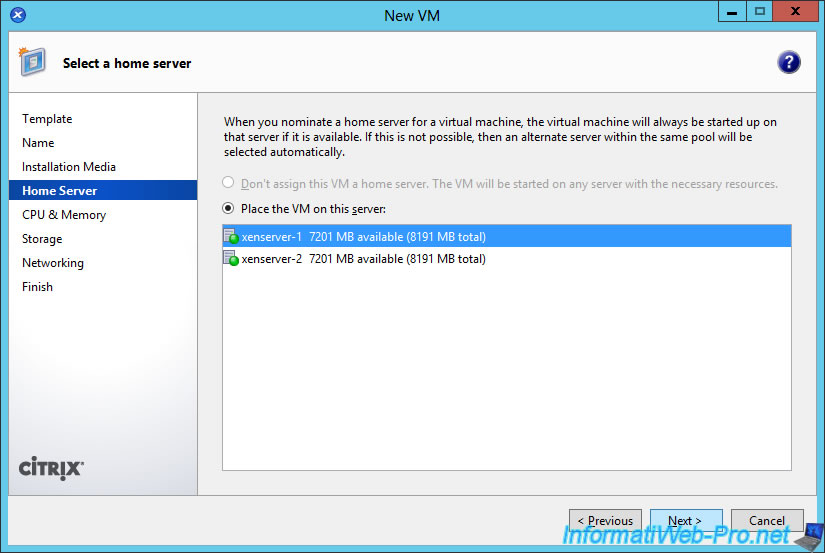
By default, XenCenter will choose one of your shared storage to store the VHD virtual machine.
As we will configure high availability later in the tutorial, we will store it on our iSCSI server.
To do this, select the displayed virtual hard disk and click "Properties".
Note : this also works on a NFS storage.
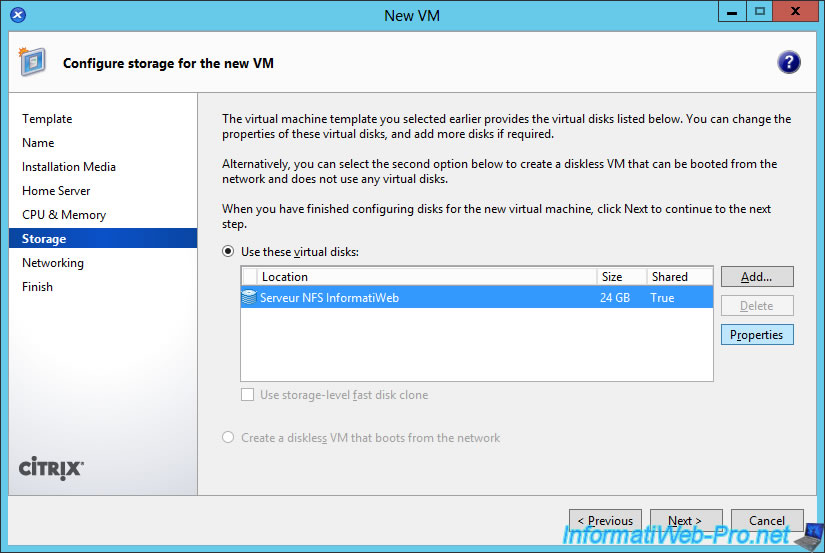
Select your iSCSI server and click OK.
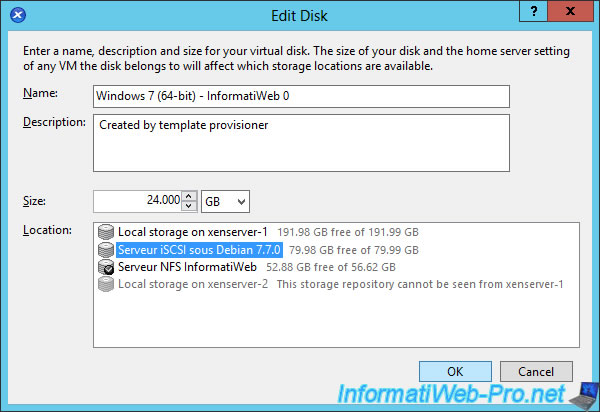
Now, click Next.
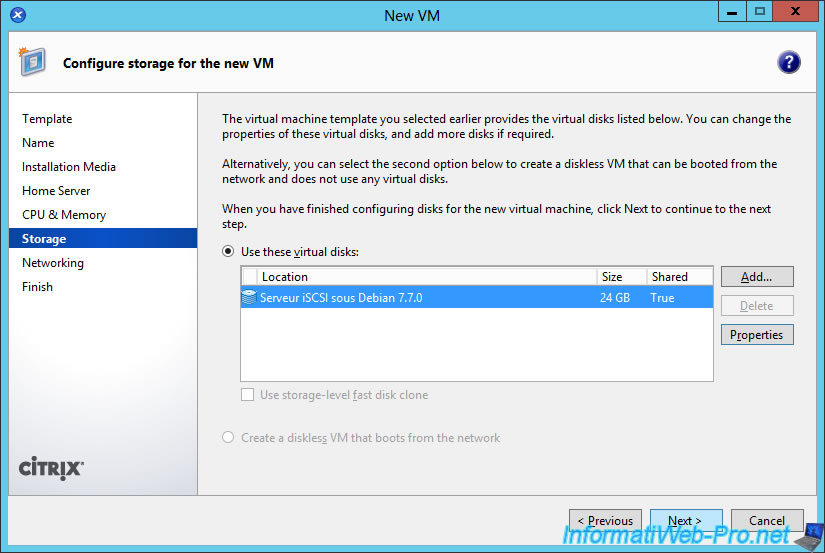
Select the network to use for this VM.
Note : as you can see, our XenServer server has two network cards. (The reason has already been explained in step 3 of this tutorial.)
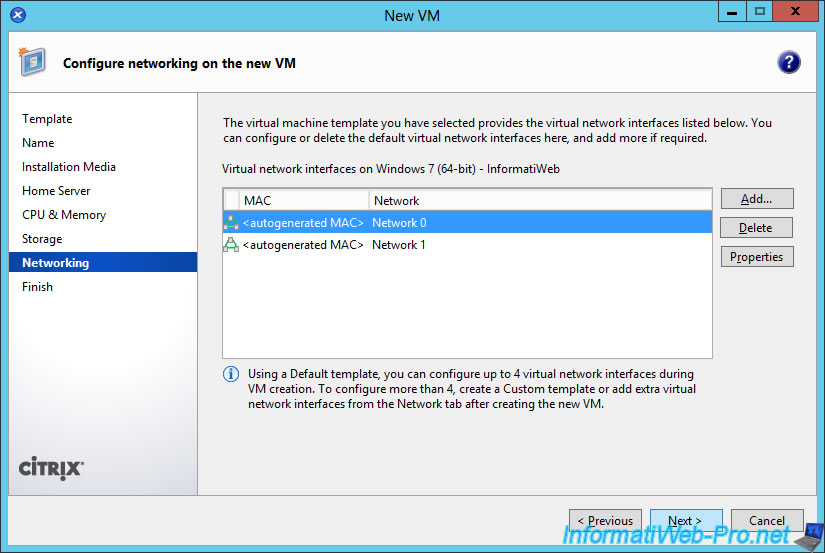
A summary appears.
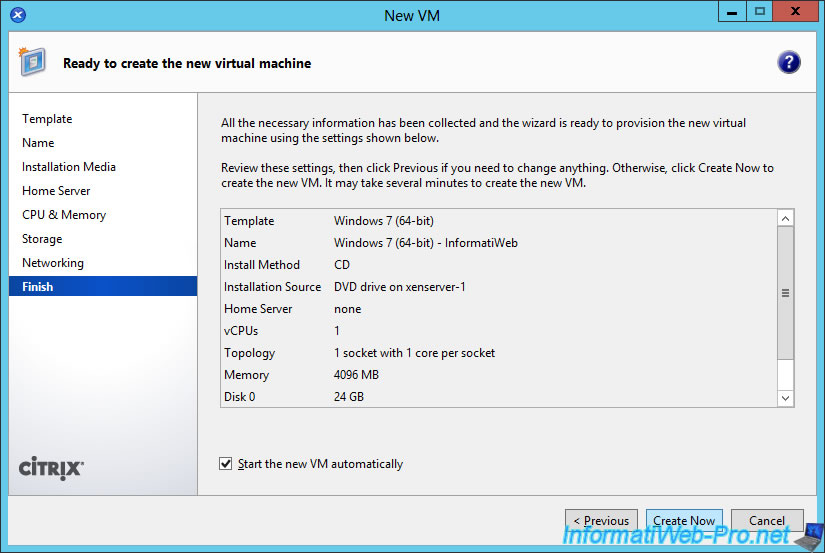
Now, install the OS normally.
Once the VM installed, be sure to install XenServer Tools, as usual.
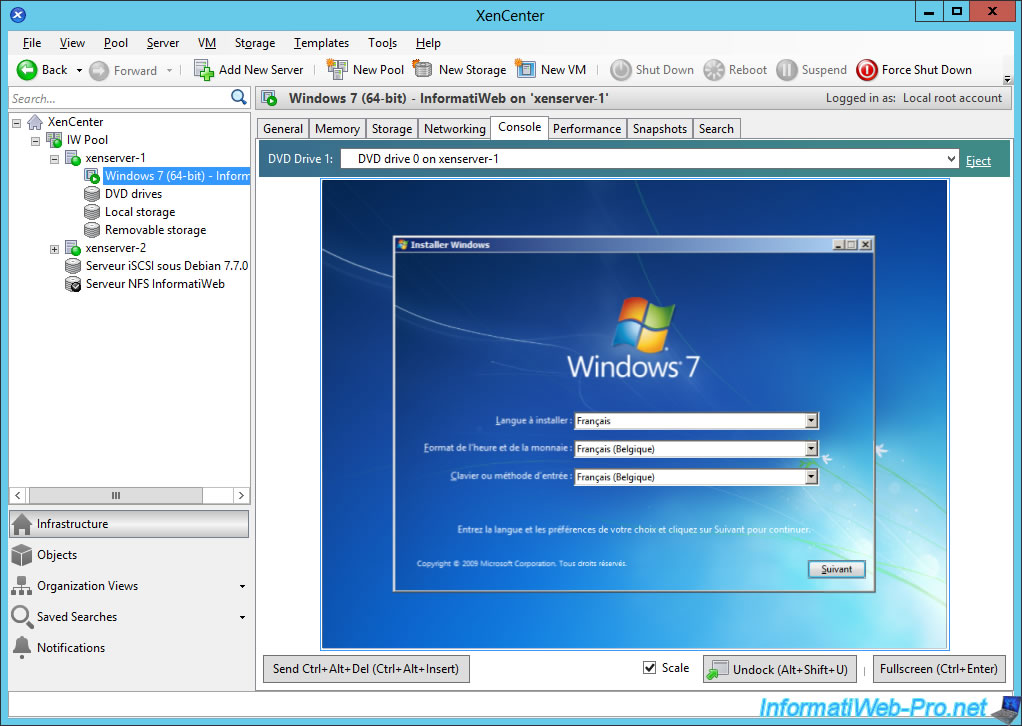
11. Start or migrate a virtual machine from one server to another
To start a virtual machine of your choice when she is stopped, simply right click on it and then go to "Start on Server".
In this menu, you can choose the server on which you want to start :
- Home server : default server associated with that VM during its creation (or in its properties).
- [Name of one of your XenServer servers] : the desired XenServer server of your pool.
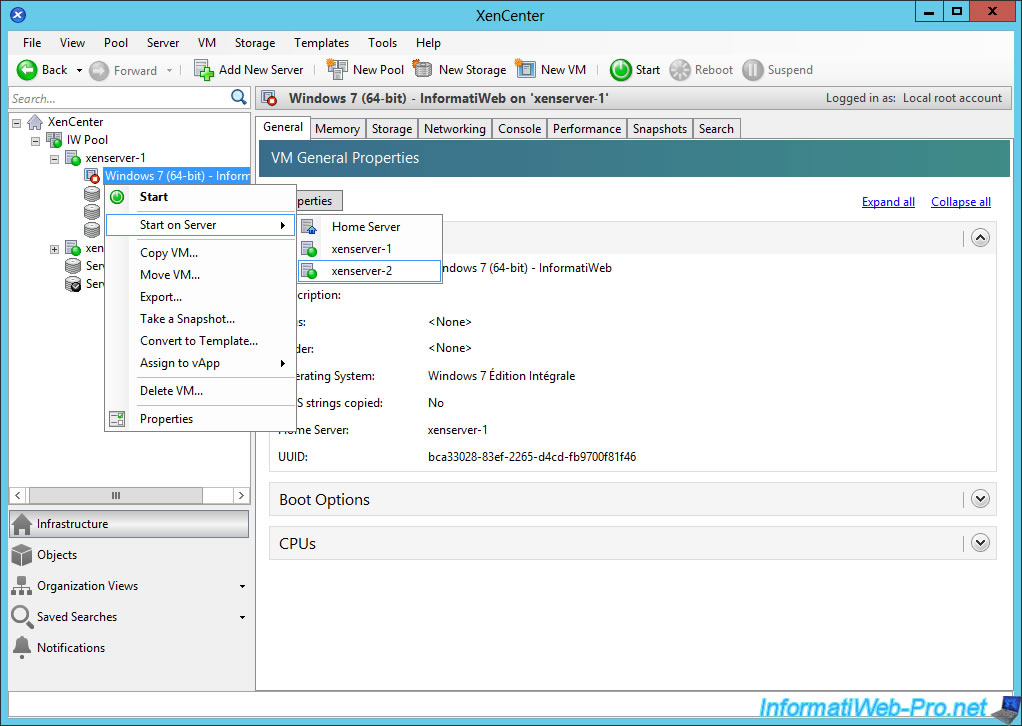
To migrate a virtual machine from one server to another, so when she is currently running, it will require a little pausing of the VM.
Indeed, when you migrate a VM from one server to another, it means that it will be the resources (RAM, CPU, ...) of another XenServer server which will be used.
For this, when the virtual machine is running, right-click on it, then go to "Migrate to Server" and select the destination server.
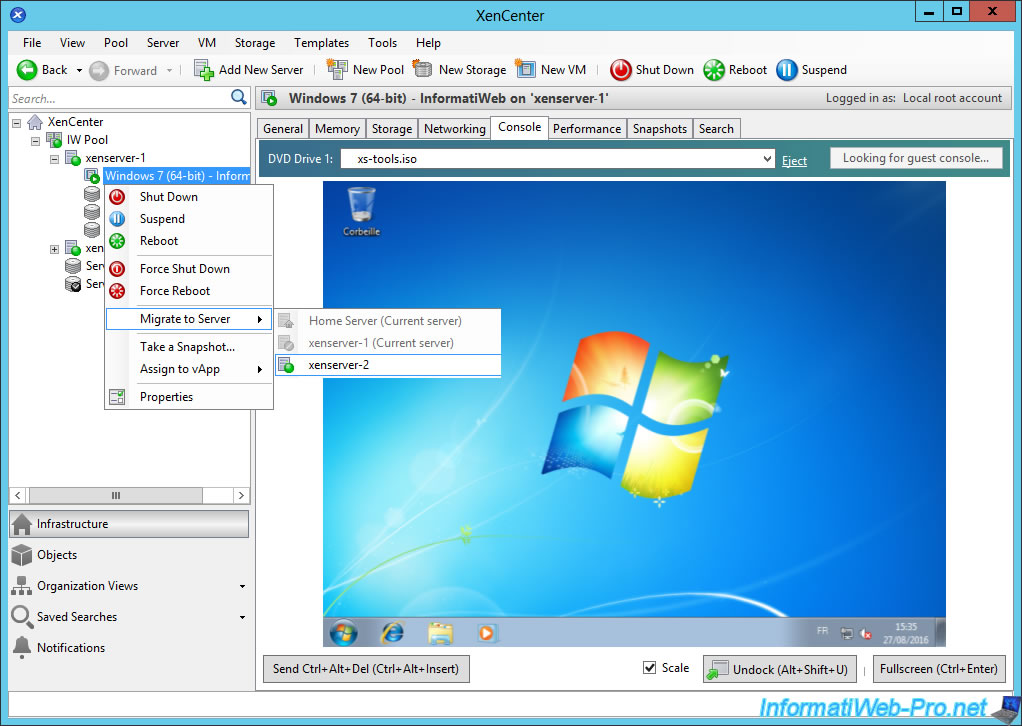
XenCenter will move running virtual machine to another XenServer server.
You will see that the "Migrating" status will appear at the bottom left and the virtual machine icon will become yellow.
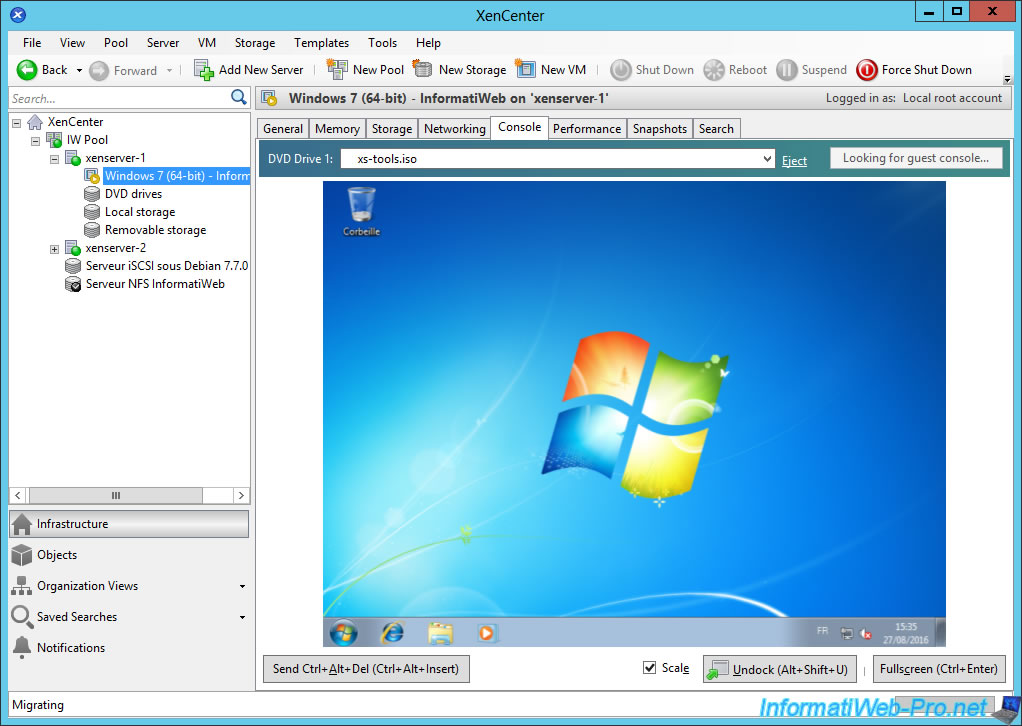
Then, the virtual machine appear on the other XenServer server.
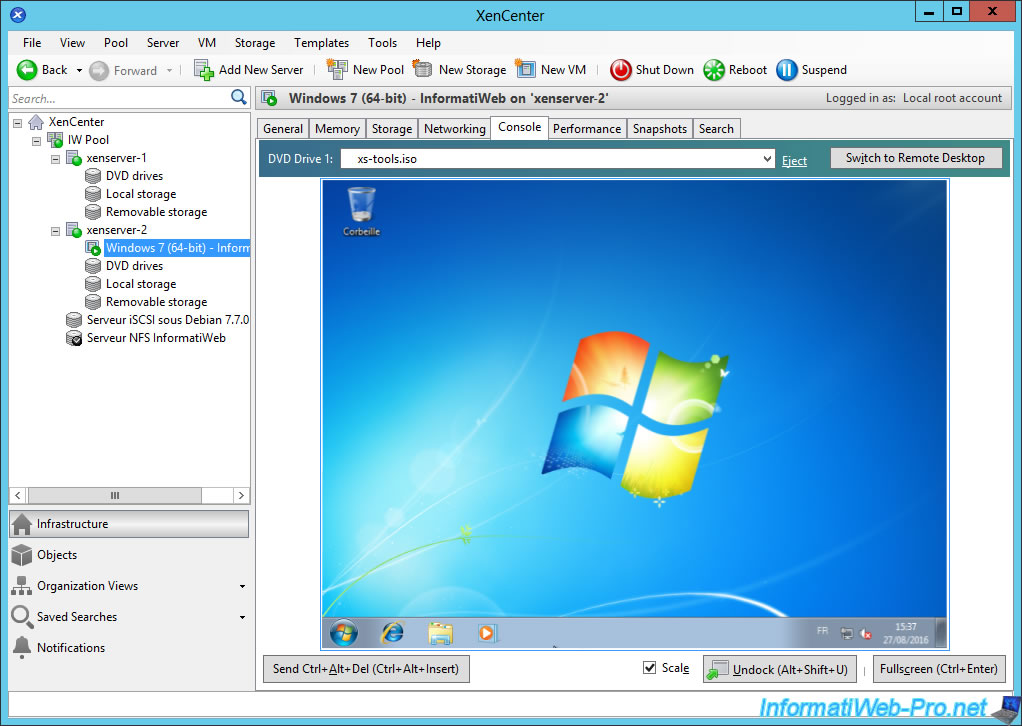
Share this tutorial
To see also
-
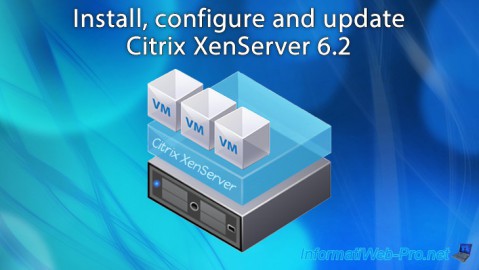
Citrix 12/30/2014
Citrix XenServer 6.2 - Installation, configuration and updates
-
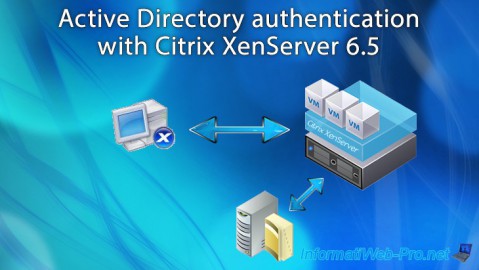
Citrix 6/21/2017
Citrix XenServer 6.5 - Active Directory authentication
-
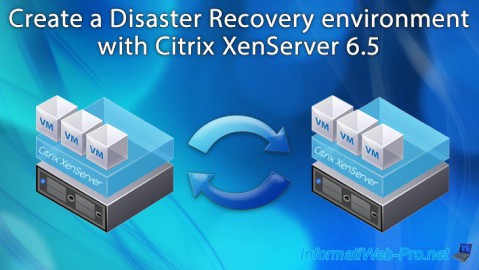
Citrix 5/21/2017
Citrix XenServer 6.5 - Disaster Recovery
-
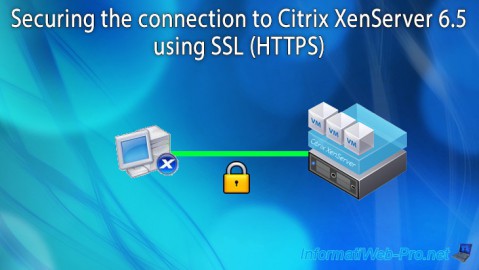
Citrix 4/30/2015
Citrix XenServer 6.5 - Secure the connection using SSL (HTTPS)

No comment